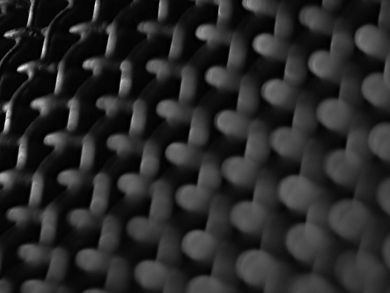Sodium-ion batteries (SIBs) could replace their lithium variant in some applications since sodium is an abundant and cheap element. The development of suitable electrode materials is still ongoing. Titania (TiO2), for example, can intercalate sodium ions and thus is a candidate for an anode material. However, it conducts electricity poorly and allows only slow movement of sodium ions.
Jinkui Feng, Shandong University, Jinan, China, and colleagues have developed a composite of graphene, nitrogen-doped carbon, and TiO2 nanoparticles with a porous structure to be used as a SIB anode material. The team used a solvothermal one-pot process in dimethylformamide (DMF)/methanol to prepare a graphene oxide(GO)/metal-organic framework (MOF) composite. The amine-functionalized NH2-MIL-125 (Ti) was used as the MOF component. The GO/MOF precursor was then annealed at 600 °C under an inert atmosphere to give the desired product. The material retained the porous structure of the MOF, while the organic components were converted to carbon materials.
The prepared electrode has a high capacity of 336 mAh/g at 20 mA/g and retains 93 % of its capacity after 5000 cycles. According to the researchers, the coating of graphene and nitrogen-doped carbon around the titania nanoparticles improves the electronic conductivity of the material, while the porous structure enhances rate performance and cycling stability.
- Metal–organic framework-derived graphene@nitrogen doped carbon@ultrafine TiO2 nanocomposites as high rate and long-life anodes for sodium ion batteries,
Zhen Zhang, Yongling An, Xiaoyan Xu, Chenglong Dong, Jinkui Feng, Lijie Ci, Shenglin Xiong,
Chem. Commun. 2016.
DOI: 10.1039/c6cc07346h



